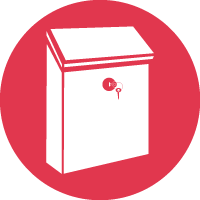-
Overview You can't Edit
Users Assigned: Shimizu77For anyone interested in the history of Japanese art and culture, no visit will be complete bereft of a tour of Nara. Note that as well as it's magnificent cultural treasures; Nara offers the unlikely phenomenon of the world's most aggressive deer.
Although Kyoto endures as Japan's major historical and cultural centre, Japanese tourists, and you too should equally revere this the Kansai region's other fasinating historical center. -
History "The Nara Period" You can't Edit
During the Imperial period Nara was Japan's capital, and today it is home to many important temples, shrines, and Buddhist art treasures.
Nara is considered by many to be home to the very roots of Japanese culture and one of the cornerstones of Japan's unique forms of Buddhism. Present-day Nara began life in 710 as Heijo-kyo, meaning "Citadel of Peace". Originally a flat, nondescript tract of farmland in the Yamato Plain, it was selected as the site for a new imperial capital by the Emperor Mommu, just before his early death, and by Fujiwara-no-Fuhito, the head of the powerful aristocratic Fujiwara clan and father-in law of the succeeding emperor, Shomu.
In the year 710 it was decided new to set up a permanent residential capital for the imperial court, initially to the west of here Naniwa (present-day Osaka) and then here at Nara.
Laid out like a chessboard (nearly half the size of China’s similarly designed capital, Change’an), Nara had its imperial palace at the northern end, with court residences, Buddhist monasteries, and Shinto shrines stretching to the south. In those peaceful years, without threat of foreign invasion or civil war, there were no city ramparts.
At the height of its glory, Heijo-kyo's skyline was punctuated by 50 pagodas, together with numerous temples, mansions, and the imposing imperial court itself. Despite serving as Japan's imperial capital for only 74 years, Nara's influence on Japan's cultural development has loomed large throughout the city's 1,300-year history.
The era known as the Nara Period was marked by the religious fervour of the Buddhist monks and also by their accompanying artistic achievements. The Japanese were attracted more to Buddhism’s ritual and art than to its complex philosophy, rendered all the more difficult because its texts were, for several centuries, available only in Chinese, the language of a small court elite. Buddhist monks initiated great progress in Japanese architecture, bronze-casting, bridge building, and sculpture. To this day, historians of Chinese art find the best surviving examples of Tang-dynasty architecture among the seventh and eighth-century temples in and around Nara.
By marrying his daughters to sons of the reigning emperor and then engineering timely abdications, a Fujiwara contrived always to be father-in-law, uncle, or grandfather behind the throne. Very often the emperor was only a minor, so that the Fujiwara patriarch acted as regent. He then persuaded the emperor to abdicate soon after his majority, and the regency would continue for the next youthful incumbent. The important thing was to have the emperor’s sanctions for the regent’s political decisions.
Very few emperors were reluctant to submit to Fujiwara domination. The burden of his spiritual functions as high priest of Shinto and the tasks of administration led the emperor to welcome and early abdication, frequently to retire to a life of Buddhist meditation and scholarship. The Fujiwara resented the Buddhist clergy’s great and growing influence in imperial affairs. There were too many monasteries in and around Nara. It was time to move the capital.
Although there are no reliable accounts of this period, third-century Chinese documents speak of a Japanese priestess-queen, Himiko, ruling over a land of law-abiding people who enjoyed alcohol and were divided into classes distinguished by tattoo marks. Five centuries later, Japan’s own Kojiki and Nihon-shoki chronicles describe the creation of the imperial dynasty in the year 660 B.C : the first emperor, Jimmu (“Divine Warrior”)—great grandson of the Sun Goddess’s grandson—embarked on an expedition of conquest from Kyushu along the Inland Sea coast to the Yamato Plain of the Kinki region (near modern-day Nara).
Shrouded from the modern travelers by its more famous cousin, Kyoto, Nara stands as one of the more beautiful and historical cities in Japan, yet despite its various temples and World Heritage Sites such as the Historic Monuments of Ancient Nara, it has remained largely off the grid when it comes to mass tourism. A once-upon-a-time capital of Japan (from 710 to 784), Nara is just as mystical as any of the other cities within the country, yet there is something here that the other places lack: an indescribable sense of magic and ancient history that has to be experienced first-hand to be understood.
Nara was Japan’s first actual capital, which makes it a historically significant place. However, the city also boasts a UNESCO World Heritage Site, consisting of Tōdai-ji, Saidai-ji, Kōfuku-ji, Kasuga Shrine, Gangō-ji, Yakushi-ji, Tōshōdai-ji and the Heijō Palace remains, and together with Kasugayama Primeval Forest, collectively form "Historic Monuments of Ancient Nara". For these reasons Nara is considered to be second only to Kyoto as a treasury of cultural history and legacy. And all of that is packed into a tiny space that almost defies logic, and really brings home the old adage of “size doesn’t matter”. From Heijo Palace to Kasuga Shrine to the Tōdai-ji temple complex and other various Buddhist temples scattered around the city, the sense of mysticism pervades everything here, from daily routines to nightly outings. -
Getting there? You can't Edit
Users Assigned: Shimizu77The Kintetsu Station is the ideal starting point for any exploration of the city. Next to the station's south entrance is an excellent tourist information center. The friendly staff usually speak reasonable English and will happily ply you with maps and brochures, help you get oriented, and provide advice and information on festivals and special events.
Next to the fountain outside Kintetsu Station is bustling Higashi-mukidori, a covered mall of souvenirs shops, antique stores, and numerous eateries. At the other end is Sanjo-dori, Nara's main shopping street, has calligraphy stores noted for their fine inkstones, a Nam specialty. -
What can you see and do? You can't Edit
Users Assigned: KazmiProbably the most significant aspect of the city, and definitely one of the main reasons to come, is Nara Park. Tame deer wander throughout, and there are several temples, shrines, and culturally significant statues and other historic references. However, tourism has definitely taken its toll, and the various souvenir shops steal a bit of the thunder. Still, there is probably no better place to see the legendary Japanese pagodas in all their splendor, and explore the vestiges of the past in places like the Nara National Museum, or visit the Kasuga Taisha after a walk through the legendary Kasuga-yama Primeval Forest. From the gardens to the temples to the shrines in the museums, Nara is a treasure-trove of both natural beauty and cultural significance, and is the perfect place to experience Japanese traditions in a more reserved setting than the traditional hotspots.
SECTION TITLE
| Rev. | User | Date |
|---|
Alternative Routes - Flights, Trains, Buses to Nara
Use the all modes of transport search engine to get you there.
Want a widget like this on your own website to help people get to you?
Accommodation near Nara
We currently don't have any accommodation in the local area tagged by our community. Please see the list of hotels below, or if you want to help out and earn Reputation Score then search for your favourite places to stay with the 'destinations' search on the top of every page, and then contribute details about that place e.g. room details, location facilities, and why you like it.
Hotels near Nara
Landmarks near Nara
Looking for something to do or a place to go see near Nara? Here is our list of options.
-
Nara Hotel2.70 Km from NaraNara Hotel (奈良ホテル) is a five star hotel in Nara, Japan. The hotel is located on the hillside overlooking Nara Park. Opened on October 17, 1909, it is one of the most historic hotels in Japan. It is partially owned by the West Japan Railway Company. In 2009 the first centennial anniversay of the hotel was celebrated.
-
Himuro Shrine3.01 Km from NaraHimuro Shrine (氷室神社, Himuro Jinja) is a Shinto shrine in Nara, Nara Prefecture, Japan. It was established in 710. Kami enshrined here include Emperor Nintoku and Nukata no Onakatsuhiko no Mikoto (額田大仲彦命). The shrine's main festival is held annually on October 1.
-
Hase-dera19.04 Km from NaraTrue
-
Hirakata Park20.31 Km from NaraTrue
-
Fujiwara-kyō20.33 Km from NaraTrue
-
Abe Monju-in20.45 Km from NaraTrue
-
Iwashimizu Hachimangū23.67 Km from NaraIwashimizu Hachimangū (石清水八幡宮) is a Shinto shrine in the city of Yawata in Kyoto Prefecture, Japan.
-
Keihan Cable Line23.98 Km from NaraTrue
-
HEP Five27.92 Km from NaraTrue
-
Expoland28.07 Km from NaraExpoland, located in Suita, Osaka, Japan, was opened as the amusement zone at the International Exposition in 1970 (Expo '70) and thrived for over 30 years as an amusement park. There were more than 40 rides and attractions, 19 restaurants and shops. On May 5, 2007, a 19-year-old university student from Higashiomi, Shiga was killed and nineteen other guests were injured when the Fujin Raijin II derailed at Expoland. Initial reports said that forty people were injured, with thirty-one being taken...
Points of Interest near Nara
Looking for important things or something to do or a place to go see near Nara? Here is our list of options.
Filter By Tags:
-
Tōshōdai-ji
The Toshodaiji temple boasts rare examples of ancient architecture and sculpture. Less spectacular than some of the temples in expensively restored Nishi-nokyo which is its neighbor to the south, Toshodaiji nevertheless is the largest remaining example of Nara period architecture.
It has numerous period sculptures - the most celebrated is a 5-m (16.5-ft) thousand-armed Kannon statue.
Tōshōdai-ji 13-46 Gojōchō, Nara-shi, Nara-ken 630-8032, Japan -
NishinokyochoFound to the South west of modem Nara is an ancient area called Nishi-nokyo (meaning "west of the capital"), where you will find three important temples.
The sunset reflection of the twin pagodas of Yakushlji in a nearby lake is one of Japan's most striking and visually poetic images. Of the original buildings, only the To-to (East Pagoda) remains, considered by many to be Japan's most beautiful pagoda.
Although it appears to have six stories, the pagoda is actually a three-story structure, each level having an extra roof for added visual impact. The vermilion Sai-to (West Pagoda) was built in 1980 on the site of the long-destroyed original. Between them is the Kondo (golden, or main, hall), reconstructed in 1975.
Among its many notable bronze images is the Yakushi triad, comprising three blackened-bronze images: the Yakushi Buddha (dedicated to healing and medicine) seated on a medicine chest between Bodhisattvas of the sun and moon.Nishinokyocho, Nara, Nara Prefecture 630-8042, Japan -
48 NoboriojichoNo info yet.. Please go to this page and enter some.48 Noboriojicho, Nara, 630-8213, Japan
-
Kōfukuji Five Storied Pagoda
Found in the Nara Park and at the edge of the Sarusawa-ike pond is Kofukuji temple. It's impressive 50 metre or 165 foot, pagoda with 5 floors.
It is Japan's second-largest after the Toji pagoda which is located in Kyoto.
It is undoubtedly one of Nara's most photographed places. The present structure, which is still very old, as it dates from 1426, replacing some 5 pagodas each one destroyed by fire and then rebuilt.
In the past Kofukuji has comprised around 175 buildings, most of which have been lost. These include the Kasuga Grand Shrine, with which it has been closely associated for well over a thousand years. This is found at the foot of Mt. Wakakusa.
The surviving artworks of Kofukuji and other artifacts are housed in its newest building, the Museum of National Treasures. This is now a fire-proof building which was constructed in 1958 to honour Kofukuji's cultural and historic importance.Kōfukuji Five Storied Pagoda 48 Noboriōjichō, Nara-shi, Nara-ken 630-8213, Japan -
Nara National Museum
This is originally built part of museum. It is connected by a subterranean tunnel to a newer, tile-roofed structure just beyond it.
This museum of ancient art displays Buddhist statues and sculptural types from around the year 600 through the Middle Ages.The permanent collection is housed in the old wing, and its fascinating exhibits showcase the development of Chinese influenced Buddhist art and design.
The gift shop in the underpass between the two buildings offers an excellent selection of quality souvenirs, reproductions, and posters of Nan culture.Nara National Museum Japan, 〒630-8213 Nara-ken, Nara-shi, Noboriōjichō, 奈良市登大路町50 -
Nandaimon Gate of TōdaijiNo info yet.. Please go to this page and enter some.Nandaimon Gate of Tōdaiji 406-1 Zōshichō, Nara-shi, Nara-ken 630-8211, Japan
-
Tōdai-ji
Found on the west side of Nara Park is Todaiji, which—like many elaborate temple complexes—comprises many remarkable structures and artifacts.
Here you will find the majestic Nandaimon. standing over 19 m (63 ft) high and dating from 1199. Built in a classical Indian architectural style, this huge structure is only two-thirds the size of the original destroyed by a typhoon in 962.
The gate houses the two Benevolent Kings, guardian deities created in the twelfth century by master sculptors Unkei and Kaikei to guard the inner temple compound.Pass through the gate (it means Great South Gate in Japanese) for your first view of the massive roof of the Daibutsuden straight ahead. This build, constructed around 1709, is only ⅔rds of the first one which was destroyed by fire decades before.
On the right of the door is Binzuru, a disciple of Prince Gautama (the Buddha's original name before achieving enlightenment). His statue is said to have special healing powers; sections of the statue shine with the polish of thousands—if not millions—of hands rubbing away ailments over the centuries.
At last you find Dalbutsu or Great Buddha inside a huge hall, in the oft-depicted posture of deep contemplation on a giant platform within a loop of massive lotus leaves.
At almost 15 metre, or just under 50 foot tall, the enormous bronze statue is somewhat shorter than the first one which constructed and covered in gold leaf, in the year 752. As with all Buddha images the positions of the hands are highly significant.
The Great Buddha's right hand is bestowing spiritual tranquility, while the left symbolizes the granting of wishes. Seated on one side is the Nyorin Kannon, in whose hand is a jewel used to answer prayers and grant wishes; on the other is Kokuzo, who embodies wisdom and happiness.
Tōdai-ji 406-1 Zōshichō, Nara-shi, Nara-ken 630-8211, Japan -
Nara ParkNara Park's most famous residents are its deer, protected since the eighth century, when they were considered messengers from the gods. Despite being wild the deer are quite tame and loiter around the park's various tourist attractions, hoping for a free snack of the deer biscuits sold here.
Have your camera ready to record the incredible sight of a wailing Japanese child beating a hasty retreat to its parents after being chased by a group of hungry deer in a feeding frenzy.Nara Park Zoshicho, Nara, Nara Prefecture 630-8211, Japan -
Nigatsu-do
Nigatsu-do (Second Month Hall), one of Todaiji's most famous sub-temples, whose front portion rests on a vast network of wooden beams. The covered northern staircase and the broad stone southern staircase both lead up to the main walkway encircling the temple, which has massive lanterns and a strange assortment of artwork donated by supporting companies.
Nigatsu-do hosts a spectacular fire purification festival in the second month of the lunar calendar (hence its name): the O-mizu Torii, or Water-Drawing Festival.
Every night for two weeks, temple priests brandish long poles each with a flaming cedar ball at the end. They run along the front of the verandah, deliberately showering the large crowd below with burning embers that are believed to bring good luck for the coming year, burning away transgressions from the previous one. In long-exposure photographs, the entire temple appears to be on fire.Nigatsu-do Japan, 〒630-8211 奈良県奈良市Zōshichō, 雑司町406-1 二月堂 -
Shinyakushi-jiThe Shin-Yakushi Temple is an edifice of genuine antiquity. Founded by the Empress Komyo, the temple's hall, with an imposing collection of Buddhist statuary from the same era, is the original building, standing, in much the same manner as when it was erected in the 8th century, in a clearing of bush clover.Shinyakushi-ji 1352 Takabatakechō, Nara-shi, Nara-ken 630-8301, Japan
Exchange Rate History Japan
Exchange rate fluctuations can have a considerable impact on your trip budget. If your home currency has appreciated in value in the recent term over the currency of your destination you are likely to find the place inexpensive.
Select your home currency from the drop down to compare it to the currency in use in Japan.
Currencies fluctuate all the time, to keep updated of rapidly devaluing currencies follow us on Twitter or Facebook , or if you have somewhere special in mind sign up for an account and plan a trip. We will then keep an eye on their currency rates, and send you an alert if their currency goes down in comparison to yours.
Climate near Nara
Do you know of anything else about the enviroment that makes you happy to come to Nara? If it's a city or neighbourhood are there any climatic, or microclimatic features that you could tell others about. If the location is a building or place, then can you describe it maybe as "sun-lit", or "cold in the mornings". We'd love you to contribute - why not let us know in the drop box below
Graphic showing average weather in Nara in Celcius and Centimeters (Change to Farenheit and Inches)
| Month | Temp °C | Rainfall Cm | Temp °F | Rainfall Inches |
|---|---|---|---|---|
| Jan | 2.5 | 53.4 | 36.5 | 21 |
| Feb | 3.1 | 70.2 | 37.6 | 27.6 |
| Mar | 6.4 | 105.1 | 43.5 | 41.4 |
| Apr | 12.1 | 138 | 53.8 | 54.3 |
| May | 17 | 129.7 | 62.6 | 51.1 |
| Jun | 21.3 | 219.2 | 70.3 | 86.3 |
| Jul | 25.9 | 174.3 | 78.6 | 68.6 |
| Aug | 26.7 | 128.7 | 80.1 | 50.7 |
| Sep | 22.7 | 198.6 | 72.9 | 78.2 |
| Oct | 16.3 | 140.4 | 61.3 | 55.3 |
| Nov | 10.5 | 81 | 50.9 | 31.9 |
| Dec | 5.4 | 55.3 | 41.7 | 21.8 |
Travel Info
Latest news from Nara
Events near by Nara
Do you have an event that you want to shout about? Email contact@redplanet.travel and we'll tell you how to get into this list for free!
Latest News from Nara
Let us know what is happening by tweeting @redplanetters - Use this link which will make sure you #hashtag where you are!
 Reviews
Reviews
We don't have any reviews of Nara at this time. If you've been recently please make a submission using the drop box at the bottom of the page, or better yet, join our community, participate and then write some reviews according to your Capacities and Reputation Score.
- We don't have any reviews.. please tell us.
 Page drop box for Nara
Page drop box for Nara
Been to Nara recently, or maybe you know something about the history of this place? We want you to tell the Red Planetter community about this place.
You don't need an account or have to sign up or anything!
You can earn Reputation score by joining our community and also enrol on the TravelTip$ program and get paid for good advice by other travellers.
Please just use the drop box for "facts" only. If you want to give your opinion (qualified by your Capacities) then please write a review (once you have enough Reputation score).
Find E-Mail easier? Send your comments about the place, or advise us if you see something that needs correcting on this page. You can attach pictures to your e-mail too (but try to keep the image size down, and no more than 16mb total).
If you are not logged in, or choose to make the drop box anonymously you can tell the community honestly what you seen without any concern. Please send images or other evidence to support your claims.
Summary
Topic Tags for Nara
Topic Tags are what bind the Red Planet Travel site together, and are very important.
This place has been tagged:
If you think those tags are not perfect, then please let the person responsible for this page know by dropping a note in the anonymous drop box below, or better yet sign up or login and join our community, once you've got enough reputation score you can edit them yourself!
Got a Question?
Ask any travel related question or help others with your experience
Page Captain & Crew
Before you apply read about the Roles on Red Planet Travel
Have something to Contribute?
We are looking to grow the information on this site, if you have something to contribute to any page then we'd like to hear from you.
 What's more you can now earn money (paid direct via Paypal) for writing descriptions about places you know.
What's more you can now earn money (paid direct via Paypal) for writing descriptions about places you know.
You will need to tell other members about yourself and your relevant knowledge and experience about what you want to contribute about.
Look below for some example page types, and types of people whose views on a place might be useful to know.
Page Type: Hotel
Tell us your job, knowledge, experience..
My Experience: Doctor
If you are the owner/manager of any place, then you can, of course, take control of your page and add relevant information other visitors might want to know
User Videos
Webmasters & YouTubers - to add a video to this section just link to this page in the YouTube description on your video
User Images
Do you have any recent pictures? Please use the drop box at the bottom of the page to send them to us.










Related Questions
Can you help with answering any of these questions? Help other travellers with your experience and earn reputation score on this site.
Travel Alerts
Important information posted by Red Planetters that might be useful to know.
 MDtravelhealth
MDtravelhealth TravelWiki
TravelWiki Perfect Place
Perfect Place


 More hotels from our Partner
More hotels from our Partner 